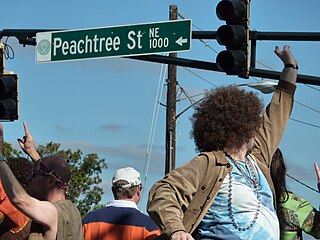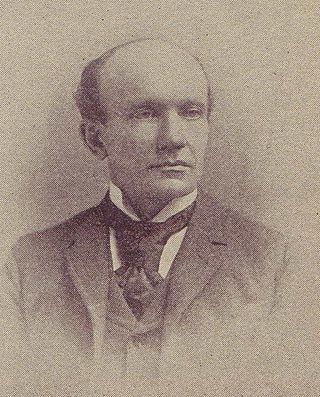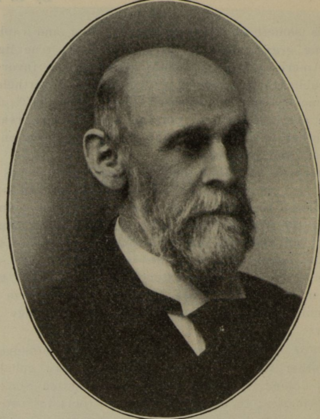
The State of Georgia Building is a 44-story, 566 feet (173 m) skyscraper located in downtown Atlanta, Georgia, U.S. Built in 1966, the building was the tallest building in the Southeast at the time. It was Atlanta's tallest until 1976, when the Westin Peachtree Plaza surpassed it. It was built on the site of the Peachtree Arcade, A. Ten Eyck Brown's 1917 covered shopping arcade which connected Peachtree and Broad streets. 2 Peachtree Street was originally constructed as the new headquarters building for First National Bank of Atlanta, also known as First Atlanta, replacing its older (1905) headquarters building next door. It was designed by a partnership of Atlanta architectural firm FABRAP and New York firm Emery Roth & Sons. First Atlanta was acquired by the holding company for Wachovia Bank in 1985, but continued to operate under its own charter until 1991. In 1991, under new liberalized banking laws, First Atlanta was merged into the charter of Wachovia Bank of Georgia. Shortly thereafter, Wachovia moved its Georgia offices to 191 Peachtree and 2 Peachtree Street was acquired by the state of Georgia for government offices.

Peachtree Street is one of several major streets running through the city of Atlanta, Georgia, United States. Beginning at Five Points in downtown Atlanta, it runs North through Midtown; a few blocks after entering into Buckhead, the name changes to Peachtree Road at Deering Road. Much of the city's historic and noteworthy architecture is located along the street, and it is often used for annual parades,, as well as one-time parades celebrating events such as the 100th anniversary of Coca-Cola in 1986 and the Atlanta Braves' 1995 and 2021 World Series victories.

The Fairlie–Poplar Historic District is part of the central business district in downtown Atlanta. It is named for the two streets that cross at its center, northeast-only Fairlie and southeast-only Poplar. Fairlie–Poplar is immediately north of Five Points, the definitive center point and longtime commercial heart of Atlanta. It is roughly bounded on the southwest by Marietta Street, on the southeast by Peachtree Street or Park Place, on the northeast by Luckie Street or Williams Street, and on the northwest by Cone Street or Spring Street. It has smaller city blocks than the rest of the city, and the streets run at a 40° diagonal.

Downtown Atlanta is the central business district of Atlanta, Georgia, United States. The larger of the city's two other commercial districts, it is the location of many corporate and regional headquarters; city, county, state, and federal government facilities; Georgia State University; sporting venues; and most of Atlanta's tourist attractions. It measures approximately four square miles, and had 26.850 residents as of 2017. Similar to other central business districts in the United States, it has recently undergone a transformation that includes the construction of new condos and lofts, renovation of historic buildings, and arrival of new residents and businesses.

Joseph Neel Reid, also referred to as Neel Reid, was a prominent architect in Atlanta, Georgia, in the early 20th century as a partner in his firm Hentz, Reid and Adler.

Godfrey Leonard Norrman, was an important architect in the southeastern United States. A number of his commissions are now listed on the National Register of Historic Places, and in 1897 he was made a Fellow of the American Institute of Architects.
William Augustus Edwards, also known as William A. Edwards was an Atlanta-based American architect renowned for the educational buildings, courthouses and other public and private buildings that he designed in Florida, Georgia and his native South Carolina. More than 25 of his works have been listed on the National Register of Historic Places.

The Fulton County Courthouse, built between 1911 and 1914, is an historic courthouse building located at 136 Pryor Street SW in Atlanta, seat of Fulton County, Georgia. It was designed by noted Atlanta-based architect A. Ten Eyck Brown (1878–1940), along with the Atlanta firm of Morgan & Dillon. It replaced an earlier building that had been designed by architect William H. Parkins. It is officially the Lewis R. Slaton Courthouse.

South Downtown is a historic neighborhood of Downtown Atlanta, Georgia, United States. South Downtown is primarily home to city, county, state, and federal governmental offices, which prompted the city to adopt signage declaring the area "Government Walk." Although much of South Downtown is dominated by surface parking lots, the neighborhood was passed over during the redevelopment boom of the 1960s and 1970s that resulted in the demolition of much of Downtown's architecturally significant buildings. The result is myriad buildings from the 1950s and earlier that retain their historic structural integrity.

The J. Mack Robinson College of Business Administration Building is a 14-story highrise at the corner of Broad and Marietta streets in the Fairlie-Poplar district of downtown Atlanta, which houses the business school of Georgia State University. When completed in 1901 as the Empire Building, it was the first steel-frame structure and the tallest in the city, until surpassed by the Candler Building in 1906.
Albert Anthony Ten Eyck Brown (1878–1940) was an architect active in Atlanta, Georgia and other areas. Brown was born in Albany, New York. He studied at the New York Academy of Design.

Bruce & Morgan was an American architectural firm based in Atlanta. It was established in 1882 as the partnership of architects Alexander Campbell Bruce (1835-1927) and Thomas Henry Morgan (1857-1940).

Willis F. Denny (1874-1905) was an architect active in Atlanta, Georgia around the turn of the twentieth century. He was the architect of Rhodes Hall (1903) and the Kriegshaber House, both listed on the National Register, as well as the demolished Piedmont Hotel (1903).
Thomas Henry Morgan was an architect in the U.S. state of Georgia.

John Robert Dillon was an architect active in Atlanta, Georgia. He became associated with the Bruce and Morgan firm in 1903, which became Morgan and Dillon in 1904. A graduate of Northwestern School of Architecture, he was named a Fellow in the American Institute of Architects in 1948.

Walter T. Downing (1865-1918) was an American architect in Atlanta, Georgia. Several of his works are listed on the National Register of Historic Places.

Hentz, Reid & Adler was an architectural firm that did work in the U.S. state of Georgia. The firm is "known in the Southeast for their Beaux-Arts style and as the founding fathers of the Georgia school of classicism."
Alexander F. N. Everett, also known as A. F. N. Everett, was an American architect who designed many buildings in his hometown of Atlanta, Georgia, including some listed on the National Register of Historic Places.

Alexander Campbell Bruce (1835–1927), also known as A. C. Bruce, was an American architect based in Atlanta, Georgia.

The Carnegie Building is a historic building located at 141 Carnegie Way in downtown Atlanta, Georgia, United States. Built in 1925 as the Wynne-Claughton Building, the 12-story building was designed by architect G. Lloyd Preacher. It was designated an Atlanta Historic Building in 1990 and was added to the National Register of Historic Places in 2012.

















